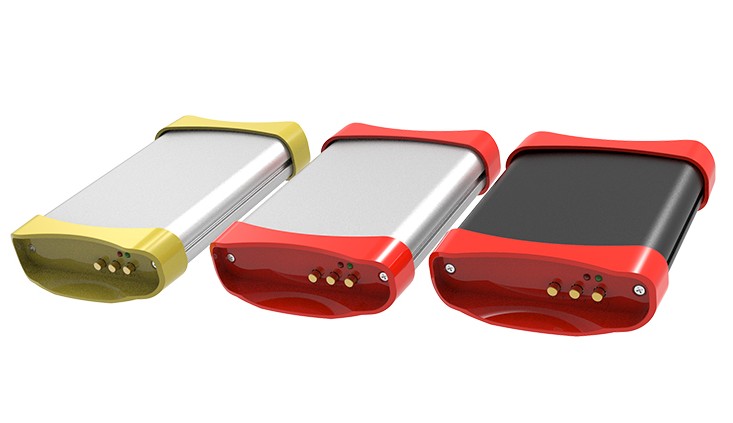When you go out for a walk early in the morning, you notice dew on the grass. As a matter of fact, the dew has to do with a phenomenon called condensation. While it may be picturesque on someone's lawn, the same phenomenon can wreak havoc on electronic and electrical equipment, even if they're housed inside an electrical enclosure.
Condensation is an issue that should never be underestimated since it can allow moisture into an enclosure and destroy the normal working of the electronic enclosure.
Fortunately, this post would reveal how the process of condensation works, and how can we prevent condensation in aluminum electronics enclosures or plastic electrical enclosures.
Condensation is an issue that should never be underestimated since it can allow moisture into an enclosure and destroy the normal working of the electronic enclosure.
Fortunately, this post would reveal how the process of condensation works, and how can we prevent condensation in aluminum electronics enclosures or plastic electrical enclosures.
How the Condensation Works?
In the theory, warm air can accommodate a lot of water vapor. But this capacity of containing water vapor diminishes as the air temperature decreases. Thus, as the moist air cools, the water starts to condense or return to its liquid state. (This condensation is part of all the precipitation phenomena that cause rain and snow.)
If humid air comes into contact with an object with a temperature at or below the dew point, water vapor in the air would start to condense on the touched object. And the outdoor enclosure is one of the most common items to get touch with the humid air.
Generally speaking, the condensation does almost no harm to the outside of the electronic equipment enclosures. (Notice: the saltwater condensation would present a corrosion hazard. The sea-side electronic component enclosure should be corrosion-resistant.)
But when the condensation happens inside the enclosure, the problem becomes tricky.
The condensation would cause all kinds of damage to electrical and electronic components in the electronic equipment box, even leaving the potential hazards, such as:
●Corrosion
●Short Circuits
●Premature breakdown
●Risk of a shock to employees
●Water drainage from enclosures
●Contamination by mold and other organisms
Generally speaking, the condensation does almost no harm to the outside of the electronic equipment enclosures. (Notice: the saltwater condensation would present a corrosion hazard. The sea-side electronic component enclosure should be corrosion-resistant.)
But when the condensation happens inside the enclosure, the problem becomes tricky.
The condensation would cause all kinds of damage to electrical and electronic components in the electronic equipment box, even leaving the potential hazards, such as:
●Corrosion
●Short Circuits
●Premature breakdown
●Risk of a shock to employees
●Water drainage from enclosures
●Contamination by mold and other organisms
How to Prevent Condensation in Electrical Enclosures
Since condensation is an unavoidable topic in the application of the electronic equipment box. The enclosure designers have developed some equipments to solve this tricky issue.
●Use water proof enclosure: The waterproof enclosure is the most effective and useful way to prevent condensation. The ip68 electronic enclosure is specially designed for protecting the component from the water. YONGU offers a series of waterproof electronic enclosures.
●Install Devices: The heaters, AC, dehumidifiers, and fans are great equipment to control the inside temperature and eliminate the condensation. Adjusted by the thermostats and hygrostats, this equipment would automatically trigger the heaters’ or fans’ activation when the inside conditions reach a certain level of temperature and/or relative humidity. In summary, these equipment create a good air ventilation in the inside of the enclosure.
●Select a vented equipment enclosure or install the waterproof air vents to your enclosures: The vent could effectively improve the enclosure’s ventilation and airflow.
●Apply corrosion inhibitor sprays or gel: The corrosion inhibitor sprays and gel are a great way to prevent the potentially corrosive risk of condensation.
●Install Devices: The heaters, AC, dehumidifiers, and fans are great equipment to control the inside temperature and eliminate the condensation. Adjusted by the thermostats and hygrostats, this equipment would automatically trigger the heaters’ or fans’ activation when the inside conditions reach a certain level of temperature and/or relative humidity. In summary, these equipment create a good air ventilation in the inside of the enclosure.
●Select a vented equipment enclosure or install the waterproof air vents to your enclosures: The vent could effectively improve the enclosure’s ventilation and airflow.
●Apply corrosion inhibitor sprays or gel: The corrosion inhibitor sprays and gel are a great way to prevent the potentially corrosive risk of condensation.
Conclusion
To electronic equipment box away from the condensation is important to ensure the electronic component's normal working. There are various methods to prevent condensation from the electronic enclosure. And the most direct method is to replace them with an ip68 electronic enclosure or IP67 enclosure. YONGU is a specialist in the waterproof electronic enclosures, offering a full range of electronic enclosures.




